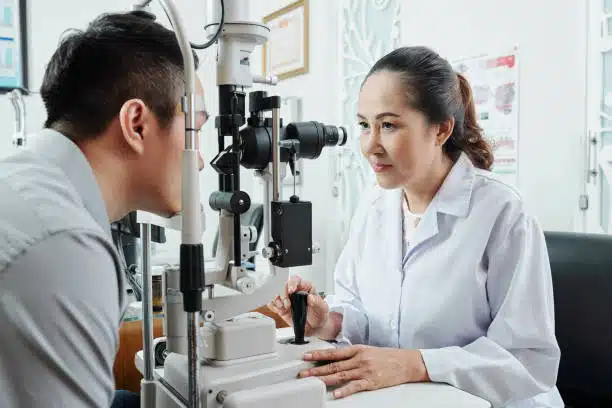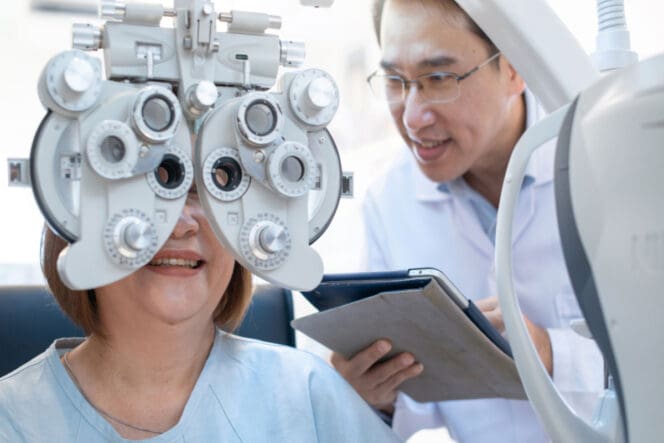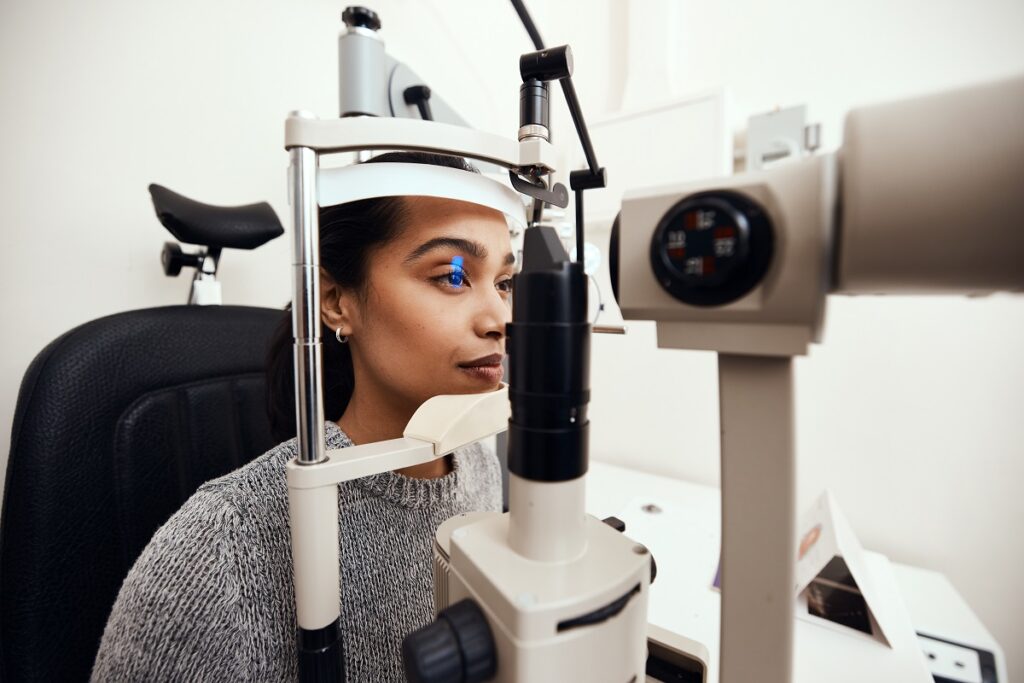Locate a Trusted Optometrist Chino for Family Eye Treatment Solutions
Locate a Trusted Optometrist Chino for Family Eye Treatment Solutions
Blog Article
Exploring the Newest Technical Improvements in Optometry and What They Mean for Optometrists
From the precision of Optical Coherence Tomography to the nuanced understandings offered by AI-driven diagnostic devices, these developments are setting brand-new standards in individual evaluation and therapy. As these developments permeate the practice, eye doctors are faced with the challenge of embracing these devices to enhance person outcomes.
Developments in Diagnostic Tools
Advancing the area of optometry, innovations in analysis tools have actually changed the method eye treatment experts analyze and diagnose visual problems and eye conditions. The previous decade has actually witnessed substantial technological advancements, making it possible for even more exact and detailed analyses. Optical Coherence Tomography (OCT), for example, offers high-resolution cross-sectional photos of the retina, permitting for the early discovery of illness such as glaucoma and age-related macular degeneration. This non-invasive imaging technique has become vital in contemporary optometric practice.
Another key technology is the intro of advanced corneal topography systems, which map the surface area curvature of the cornea with precision. These devices are specifically helpful for fitting contact lenses and diagnosing corneal conditions. In addition, digital retinal imaging has actually transformed typical ophthalmoscopy, using thorough, panoramic sights of the retina that help with complete visual exams.
The growth of wavefront aberrometry has actually likewise been vital, allowing the evaluation of refractive errors with unparalleled accuracy (Eye Doctor). This modern technology assists in tailoring restorative lenses and improving medical outcomes for refractive surgical treatments. Jointly, these analysis improvements empower eye doctors to deliver exceptional person treatment, ensuring early treatment and customized therapy strategies, eventually boosting visual wellness results
AI in Individual Monitoring
Building on the structure of sophisticated analysis devices, the incorporation of fabricated intelligence (AI) in patient management represents a transformative jump for optometry. AI systems are progressively used to improve effectiveness, precision, and customization in individual treatment. By analyzing vast amounts of data, AI can identify patterns and predict possible eye conditions, enabling eye doctors to customize treatments much more efficiently. This ability is crucial in taking care of persistent eye conditions such as glaucoma and diabetic retinopathy, where early detection and continual tracking are key.
Moreover, AI-driven systems help with streamlined person communications and administrative processes. Automated scheduling, digital appointments, and individualized follow-up strategies not just boost individual fulfillment however also optimize time administration for professionals. These systems can triage individuals based on the necessity of their conditions, ensuring that those in critical need receive timely attention.
Additionally, AI improves decision-making by offering eye doctors with evidence-based recommendations and treatment paths. By integrating information from digital health and wellness documents, AI tools offer insights that educate professional choices, reducing the risk of errors and enhancing individual results. As AI proceeds to develop, its role in client monitoring will likely expand, improving the landscape of optometric treatment.
Advancements in Retinal Imaging
In the world of optometry, retinal imaging has actually observed exceptional technical improvements that are boosting diagnostic capabilities and person care. Innovations such as Optical Coherence Tomography (OCT) and fundus digital photography have revolutionized how eye doctors assess the retina and visualize.
Enhanced imaging modalities like OCT angiography are further refining analysis accuracy. This non-invasive method maps blood flow in the retina, using crucial insights into vascular wellness without the demand for color injections. In addition, adaptive optics technology is being incorporated into retinal imaging systems to correct eye aberrations, supplying unprecedented picture clearness. Such improvements help with the identification of min retinal adjustments that might represent condition development.
Moreover, developments in expert system are enhancing retinal imaging by making it possible for automated analysis of big datasets. These systems aid optometrists in determining patterns a sign of pathology, consequently enhancing diagnostic accuracy and efficiency. Jointly, these developments are changing retinal imaging right into a cornerstone of modern-day eye care, improving outcomes and expanding healing opportunities.
Teleoptometry's Expanding Function
Teleoptometry is significantly ending up being an essential component of eye care, driven by developments in digital communication and analysis tools. As optometry embraces digital improvement, teleoptometry promotes blog here remote appointments, enabling eye doctors to prolong their services past traditional boundaries. This is specifically advantageous in country and underserved locations where accessibility to specialized eye treatment is commonly minimal. By leveraging high-resolution video clip conferencing and advanced retinal imaging, eye doctors can conduct extensive eye exams from afar, making certain prompt diagnosis and treatment.
The assimilation of fabricated intelligence (AI) further enhances teleoptometry, allowing the evaluation of visual data and aiding in the detection of eye problems such as glaucoma and diabetic person retinopathy. AI-powered formulas can swiftly analyze intricate imaging information, giving optometrists with important insights that bolster scientific decision-making.
In addition, teleoptometry sustains continuity of care via seamless assimilation with digital wellness documents (EHRs), allowing eye doctors to maintain extensive patient backgrounds. This makes sure that patients receive constant and tailored treatment also when seeking advice from various experts.
In spite of these benefits, obstacles stay, including guaranteeing data security and managing client expectations. Teleoptometry represents a substantial stride towards even more easily accessible, effective, and patient-centered eye treatment. As innovation progresses, its duty is positioned to broaden additionally.

Future Fads in Eye Treatment
A myriad of cutting-edge trends is readied to reshape the future of eye care, driven by technical developments and the progressing demands of patients. One significant trend is the integration of artificial knowledge (AI) in diagnostics, which promises to boost the accuracy and performance of eye examinations. AI formulas can evaluate substantial amounts of data from retinal images, possibly identifying conditions like diabetic retinopathy and glaucoma earlier than conventional methods.
Additionally, individualized medication is acquiring grip in optometry, with hereditary testing informing personalized treatment strategies. This approach aims to optimize person outcomes by tailoring interventions to individual genetic accounts. Wearable technology, such as smart contact lenses, is also coming up, providing real-time tracking of intraocular stress or sugar degrees, hence providing continuous insights into systemic and ocular health.
The fostering of increased go now fact (AR) and digital reality (VR) in training and patient education is another emerging fad. These innovations use immersive experiences that can boost understanding and skills both for people and eye doctors. As these patterns advance, optometrists have to stay abreast of technical advancements to supply cutting-edge treatment, guaranteeing enhanced individual results and complete satisfaction in the dynamic landscape of eye treatment.
Conclusion

Collectively, these analysis developments equip optometrists to supply remarkable person treatment, guaranteeing very early intervention and tailored treatment techniques, ultimately boosting aesthetic health and wellness outcomes.

As these modern technologies proceed to evolve, optometrists should adapt and integrate them into method, ultimately enhancing process performance and raising the criterion of eye care delivered to individuals.
Report this page